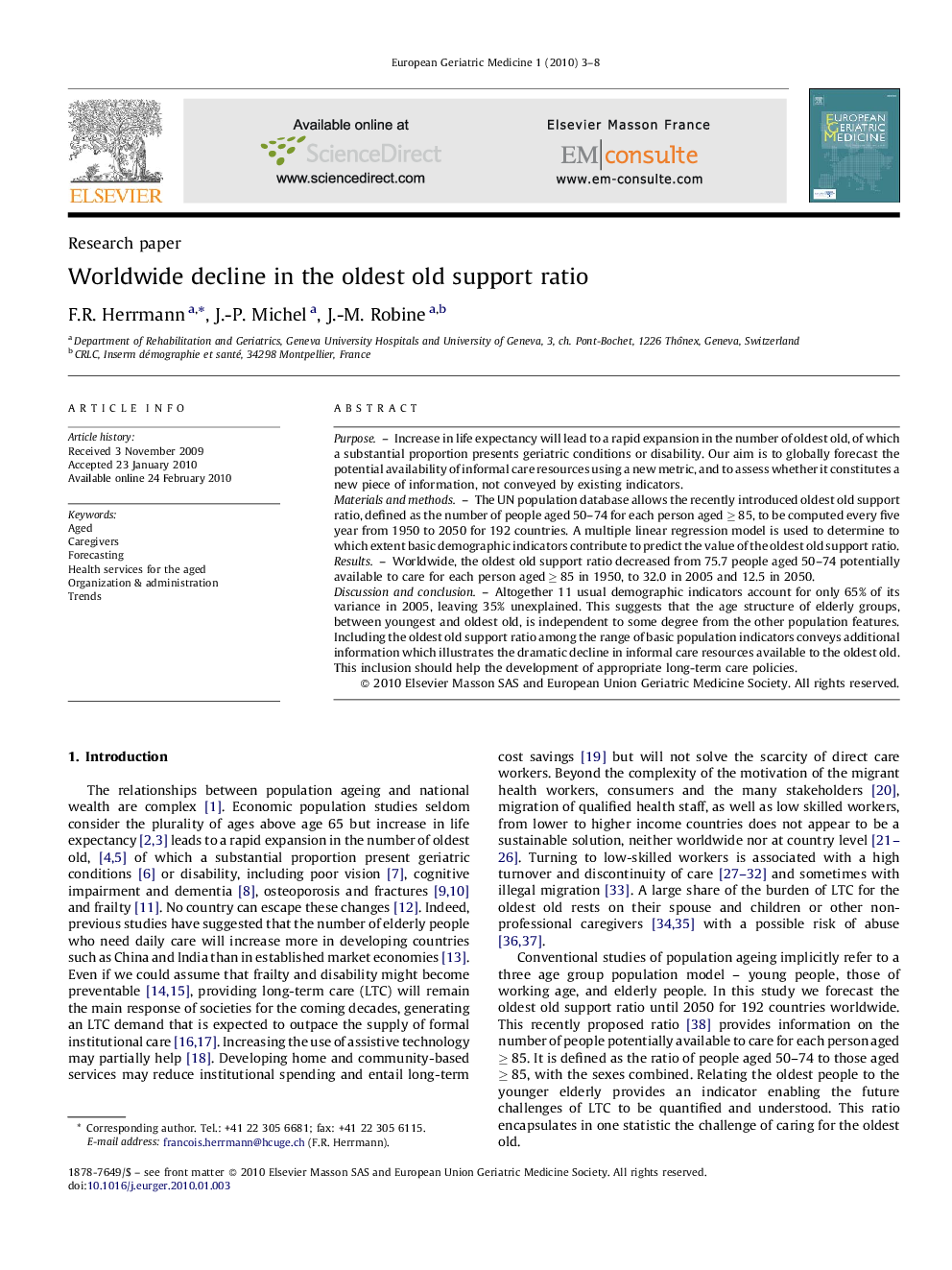| Article ID | Journal | Published Year | Pages | File Type |
|---|---|---|---|---|
| 3324720 | European Geriatric Medicine | 2010 | 6 Pages |
PurposeIncrease in life expectancy will lead to a rapid expansion in the number of oldest old, of which a substantial proportion presents geriatric conditions or disability. Our aim is to globally forecast the potential availability of informal care resources using a new metric, and to assess whether it constitutes a new piece of information, not conveyed by existing indicators.Materials and methodsThe UN population database allows the recently introduced oldest old support ratio, defined as the number of people aged 50–74 for each person aged ≥ 85, to be computed every five year from 1950 to 2050 for 192 countries. A multiple linear regression model is used to determine to which extent basic demographic indicators contribute to predict the value of the oldest old support ratio.ResultsWorldwide, the oldest old support ratio decreased from 75.7 people aged 50–74 potentially available to care for each person aged ≥ 85 in 1950, to 32.0 in 2005 and 12.5 in 2050.Discussion and conclusionAltogether 11 usual demographic indicators account for only 65% of its variance in 2005, leaving 35% unexplained. This suggests that the age structure of elderly groups, between youngest and oldest old, is independent to some degree from the other population features. Including the oldest old support ratio among the range of basic population indicators conveys additional information which illustrates the dramatic decline in informal care resources available to the oldest old. This inclusion should help the development of appropriate long-term care policies.
